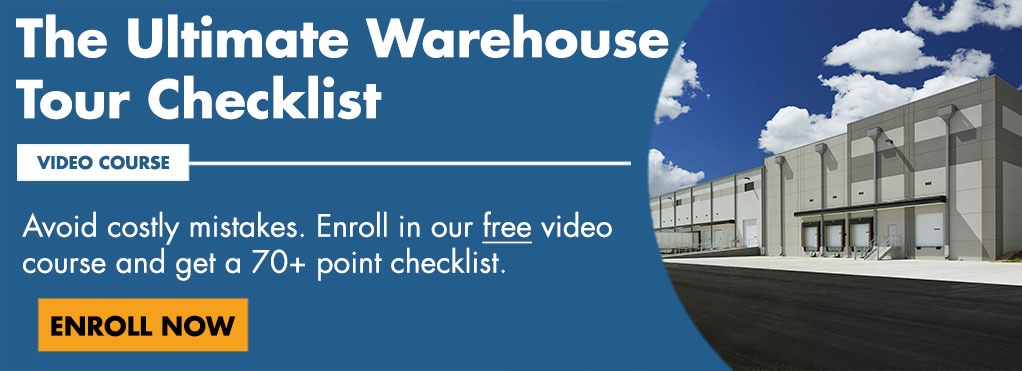In this article, you'll discover:
- Growing demand for LEED-certified warehouses driven by sustainability trends.
- Key aspects of LEED certification and recent updates for distribution centers.
- The popularity and higher rents of eco-friendly Class A properties.
- The impact of the LEED Platinum Bronx Logistics Center on the industry.
Environmental sustainability is taking center stage in the commercial real estate world. And in the warehouse industry, this has translated into a heightened focus on LEED-certified initiatives and eco-conscious strategies. This shift is driven by a combination of factors, including the push for sustainability from regulatory bodies like those on office properties in New York City.
However, it's not just government officials who are championing these initiatives. Investors, too, are increasingly recognizing the value of environmentally responsible developments, and developers who fail to align with these goals may risk being left behind in this evolving marketplace. So let's explore the increasing demand for eco-conscious warehousing solutions and the broader implications of this shift for the industry.
To stay on top of the cutting-edge trends in the CRE world, subscribe to our blog!
What is LEED Certification?
LEED, which stands for Leadership in Energy and Environmental Design, is a rating system that assesses the efficiency of building design and operation. To evaluate a site, buildings receive a set number of points reflecting their environmental impact. Points are assigned in various categories, allowing for comparison with benchmark structures.
Points are given on a 100-point scale based on performance in the following categories:
- Water efficiency
- Energy & atmosphere
- Materials & resources
- Indoor environmental quality
- Sustainability
Within the LEED certification, there is a spectrum of compliance. Buildings boosting the most sustainable measures can earn platinum status which is the highest level of certification within the LEED rating system. To achieve platinum certification, a property must earn a minimum of 80 points in the LEED evaluation process.

Sample LEED scorecard for Air Quality, source: GreenBadger
And now, LEED is expanding classifications and undergoing revisions as technological and sustainability standards get more scrutiny throughout the country. The most recent revision addresses the specific challenges and environmental considerations of distribution centers, allowing them to enhance their sustainability and efficiency. LEED v4 modifications present valuable opportunities tailored to the distinctive features of distribution centers.
For instance, it specifically addresses the unique daylighting requirements of warehouses, emphasizing energy savings and sourcing considerations on a larger scale. Lighting is a significant component of warehouse energy use. Replacing traditional fixtures with more efficient alternatives, such as occupancy-sensor-equipped lights, can yield substantial energy savings. Incorporating daylighting strategies, when executed effectively, can even meet the daytime illumination needs of the entire facility.
So, at the same time as sustainable real estate practices expand to include industrial expectations, so does the presence of ESG (Environmental, Social, Governance) in corporate decisions. And as ESG initiatives gain momentum, businesses are seeking eco-friendly solutions in their operations because if they don’t, they might face serious fines.
In the industrial market, this translates into a rising demand for warehouses that incorporate energy-efficient designs, renewable energy sources, waste reduction strategies, and environmentally conscious materials and practices. And the gold standard for sustainability when it comes to CRE is of course, LEED. So, LEED buildings are under higher demand and are fetching higher rents.
Demand is Growing for LEED Properties
In response to these increasing sustainability demands, LEED-certified warehouses, particularly Class A properties, have gained prominence. These premium facilities, equipped with cutting-edge sustainable features, have captured the interest of both tenants and investors, resulting in a noticeable rental rate disparity among property classes. The growing demand for these environmentally responsible spaces has triggered a surge in construction activities, which now dominate the pipeline.
|
“As of June 2023, there are almost 5,400 LEED‐certified and registered warehouse and distribution center projects representing over 2 billion square feet (190 million square meters) of built space.” -U.S. Green Building Council |
Simultaneously, older industrial facilities are falling behind, underscoring the market's preference for modern, eco-conscious properties and emphasizing the need for retrofitting or redevelopment to meet present environmental and sustainability standards.
LEED Platinum Warehouses on the East Coast
The Hunt’s Point project in the Bronx is the first distribution warehouse on the East Coast to be awarded the LEED Platinum rating, and the overall 10th project across the country to achieve this status.

The groundbreaking facility from Turnbridge Equities prioritizes innovation while demonstrating that companies can successfully balance warehouse efficiency with ESG expectations without compromising on either front.
|
“The completed Bronx Logistics Center will include 32-foot clear heights on both of its two warehouse floors, two exclusive site entrances for 585K SF of total warehouse space and 17 acres of parking and truck court areas, accommodating more than 1,500 parking spots.” -BisNow |
Additionally, the property provides approximately 500 electric vehicle charging stations, catering to the growing demand for electric vehicles. The warehouse promotes eco-friendly commuting with bicycle storage rooms and utilizes smart metering to effectively manage water usage.
To mitigate light pollution, the property incorporates specially designed light fixtures. Moreover, it employs MERV 13 filters to enhance indoor air quality, ensuring a healthy and comfortable work environment. Notably, the warehouse stands out with a massive 2.9-megawatt solar-powered rooftop, making it one of New York City's largest private sources of renewable energy, significantly contributing to sustainable energy generation.
This facility proves that the warehouse industry is on the brink of a green revolution.
The success of the environmentally- friendly behemoth has set a precedent for more similar eco-conscious projects are likely to follow suit. This is especially true in areas like New York where the Local Law 97 requires strict adherence to sustainability standards.
|
“Our partners can look at this project and say not only did we go LEED Platinum and respect how we’re using this building, but we’re creating thousands of jobs for the community. ” -Turnbridge Equities Managing Partner Ryan Nelson |
The Hunt's Point facility, aside from exemplifying eco-consciousness, signifies another facet of the evolution in the industrial sector: the rise of multi-story warehousing. This five-story industrial building manages carbon neutrality while providing critical last-mile deliveries for the competitive NYC metro area. Read more about multi-story warehouses.
What Should Commercial Tenants Know?
The surge in green warehouses is not merely driven by tenant preferences; it's a response to a changing landscape. In the foreseeable future, sustainability mandates will phase out properties that fail to meet evolving energy efficiency standards. This impending shift will lead to a noticeable increase in the number of LEED-certified and top-tier LEED projects entering the industrial development pipeline, while older properties lose their value. Because instead of investing time, money, and effort into revitalizing older structures, tenants are increasingly inclined to choose modern, high-quality facilities designed to withstand the test of time.
The Bronx facility sets a precedent that large-scale warehouse projects are entirely feasible, even in high-cost regions like the Northeast. Moreover, it highlights that achieving the highest level of energy efficiency doesn't mean sacrificing productivity in the process.
This market dynamic empowers tenants in several ways. Firstly, it allows them to select from a growing pool of modern, environmentally friendly warehouses that meet their operational needs while aligning with their sustainability goals. These state-of-the-art facilities not only provide energy-efficient spaces but also offer improved working conditions, which can boost employee productivity and well-being. Secondly, tenants can secure favorable lease agreements that reflect the increasing competition among landlords which often results in more flexible lease terms, cost-saving incentives, and other concessions that benefit tenants.
Lastly, as the demand for LEED and top-tier LEED projects grows, tenants who commit to such spaces position themselves as environmentally responsible and ahead of regulatory requirements.
At the end of the day, sustainability is only one factor when looking to find the perfect warehouse. Learn everything corporate tenants need to know about the industrial property search in our free video course below. You'll also get access to a downloadable checklist that can simplify your warehouse touring process.









